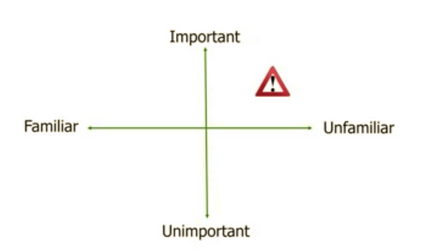In early January the latest AME financial updates were posted on NCUA’s website. Shareholders of the four solvent corporates are projected to receive total payments from their respective liquidation estates of over $3.185 billion.
Of this total 54% had been distributed as of September 30, 2021. The remaining $1.470 billion will be sent to shareholders later this year.
Southwest and Members United members will receive a liquidating dividend on top of the return of all their ownership shares. Only WesCorp members will see no payment. NCUA expects to have a deficit on its insured savings liability of $2.1 billion.
That amount appears to be final actual loss to the NCUSIF for the combined corporate resolution.
Adding these direct shareholder payments to the $2.563 billion TCCUSF net worth when merged into the NCUSIF (September 2017) brings the total cash surplus to $5.7 billion. All credit unions were paid two dividends totaling $895.8 million from these merged funds. The result is that credit unions and the corporate members, will directly receive 72% of the AME’s growing surpluses. The balance was kept in the NCUSIF.
A $12.9 Billion Total Turnaround
When the five corporates were liquidated in the fall of 2010 the auditor’s estimate of the combined deficit for the TCCUSF was reported by KMPG as follows:
At the time of liquidation in 2010, the AMEs had an aggregate deficit of approximately $7.2 billion, which represented the difference between the value of the AMEs’ assets and the contractual or settlement amount of the claims and member shares recognized by the NCUA Board as the liquidating agent.
Adding the current $5.7 AME surpluses, the total variance from this initial loss estimate is $12.9 billion.
As recently as the September 30, 2017 final TCCUSF audit, the estimate in the footnotes was that the combined estates would still have a total deficit.
Total Fiduciary Net Assets/(Liabilities) $ (110,863) millions, at September 30,2017
The Schedule of Fiduciary Net Assets reflects the expected recovery value of the AMEs’ assets, including the Legacy Assets collateralizing the NGNs issued through the NGN Trusts, and the settlement value of valid claims against the AMEs outstanding at September 30, 2017
93% of Legal Recoveries Pay NCUA’s Liquidation Expenses
All of this $12.9 billion recovery is from the interest payments and principal pay downs on the legacy assets. The longer the assets were held, the more valuable they became. The initial estimates of the credit losses over the life of these securities have proved to be in error by over $12.9 billion.
Some assert that NCUA’s net legal recoveries of $3.85 billion were a critical part of this turnaround. That is not the case. The net recoveries were important for another reason however.
NCUA’s liquidation expenses, not including payments to the lawyers, total $3.569 billion. So 93% of the net legal settlements went directly for NCUA’s operating expenses managing the AME’s and NGN trusts.
Moreover, NCUA’s costs were much greater than just those directly recorded. In one of its first actions in 2010 after seizing the five corporates, NCUA sold approximately $10 billion of sound performing corporate assets at a loss from book value of over $1.0 billion. This added an actual loss on these fully current securities whose value was temporarily impacted by “market dislocations.”
There were also additional charges paid from the AME’s assets including NCUA’s 35 basis point guarantee fee on the outstanding NGN monthly balances as reported in the audits:
The guarantee fee amount due to the NCUA, at each monthly payment date, is equal to 35 basis points per year on the outstanding NGN balance prior to the distribution of principal on the payment date,
Learning the Lessons of a Crisis
As credit unions receive these final payments, it will be tempting to close the books, move on and let bygones be gone. The crisis was over 12 years ago. But it is still referenced today by NCUA as a reason for challenging the adequacy of the NCUSIF’s design, setting the NOL, or even when imposing the new CCULR/RBC capital requirements.
Leaving these events open to these “urban myths” kinds of recall would be a critical error. There is much to learn when both auditor and NCUA’s initial total projected losses to credit unions were $13.5 to $16.5 billion versus the actual outcome of a $6.0 billion in surplus.
Why were the accounting estimates so far in error? Were the corporates more than adequately reserved even at these extreme loss estimates? What options for resolution were considered? What happened to the plan presented by the corporate network?
Why did NCUA refinance the assets via Wall Street at extremely high, above market rates, when credit unions had demonstrated the ability and willingness to continue funding all corporates at much lower costs?
What can be learned from a patient, long term view of problem resolution especially one caused by cyclical fluctuations in asset or collateral values?
The immediate public diagnosis and blame placed on corporate boards and management is a typical reaction when any firm is in difficulty. However is that criticism still useful as the legal recoveries show that fraud played a role in the design of these investments all of which were NCUA authorized? Will the corporate system ever play a leadership role again, or are they to remain permanently muzzled due to a crisis assessment that has proved wrong in so many ways?
Past problems may seem to offer little for current events. But not learning from them means the mistakes of panic judgments, placing blame, misplaced expertise and failing to respect mutual efforts are easy to repeat.
One of the great strengths of the cooperative system has been its ability to fix things and make necessary changes. Both at the credit union and the system’s institutional levels.
Cooperative design can check the ambition of self-interest by the power of collaboration and common purpose. A through public study of all the circumstances around the corporate events would restore credit union confidence in the ability of the regulator and industry to work together when future crisis occur.
An earlier analysis of why this look back is so vital can be found here.

